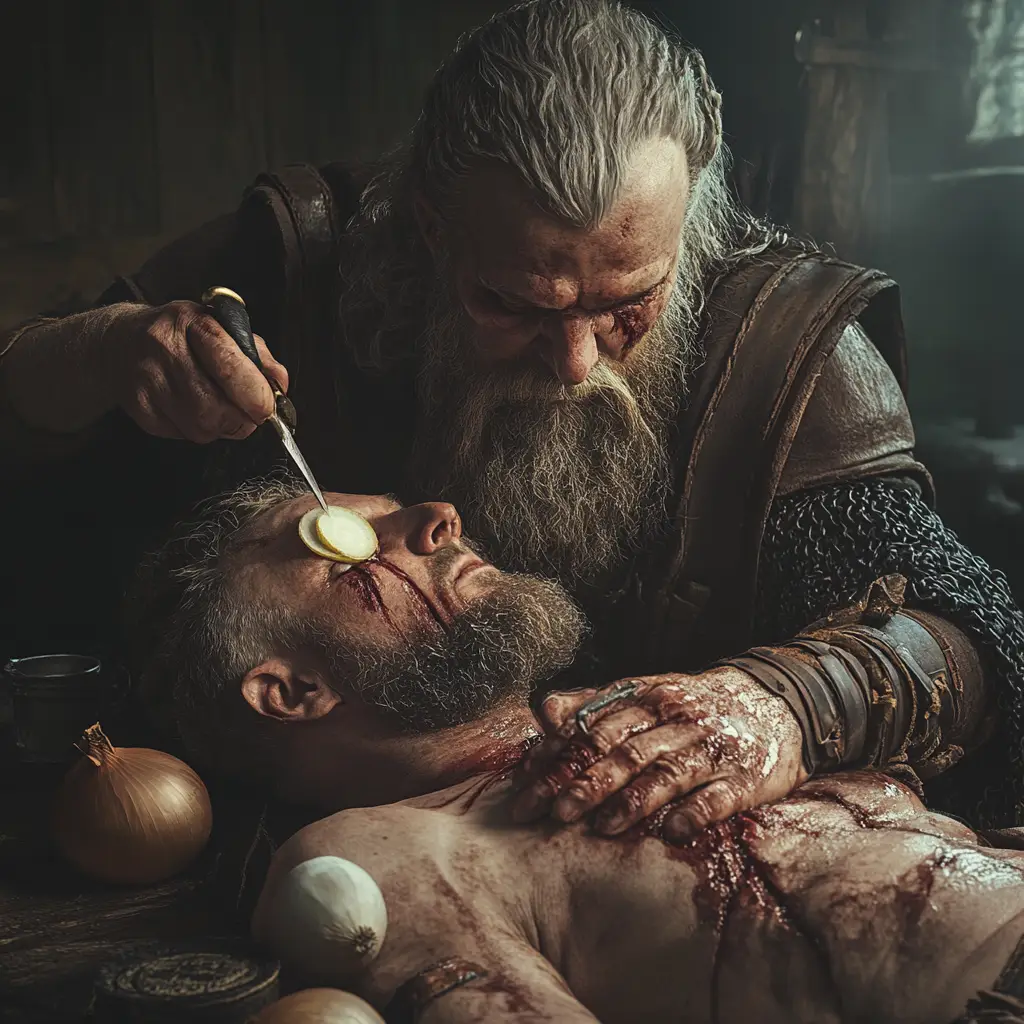Treating Wounds in the Viking Age
In the Viking Age, practical medical knowledge was vital for survival, especially in a world where battle injuries and infections were common. Among their traditional remedies, the Vikings are believed to have used onions as a treatment for wounds. Historical sources and modern research suggest that onions were applied to open injuries, potentially as a form of antiseptic dressing.
The antibacterial properties of onions were likely known through experience, if not scientific understanding. When applied to wounds, onions could help to reduce infection by drawing out pus and preventing the spread of harmful bacteria. There is also evidence to suggest that Viking healers used onions as a diagnostic tool. If the onion placed on a wound developed a particular odour, it was thought to indicate a deeper or infected injury, helping them judge the severity of internal damage.
Alongside onions, Viking healers would have used herbs, honey, and other natural substances, working with the resources available in their environment. Their knowledge of such remedies was passed down orally through generations, forming a crucial part of their cultural heritage.
Onions, therefore, were more than a staple food — they were part of a wider system of folk medicine that gave Viking warriors a better chance of recovery from the brutal realities of their world. This simple yet effective approach highlights the resourcefulness and ingenuity of Viking society.

